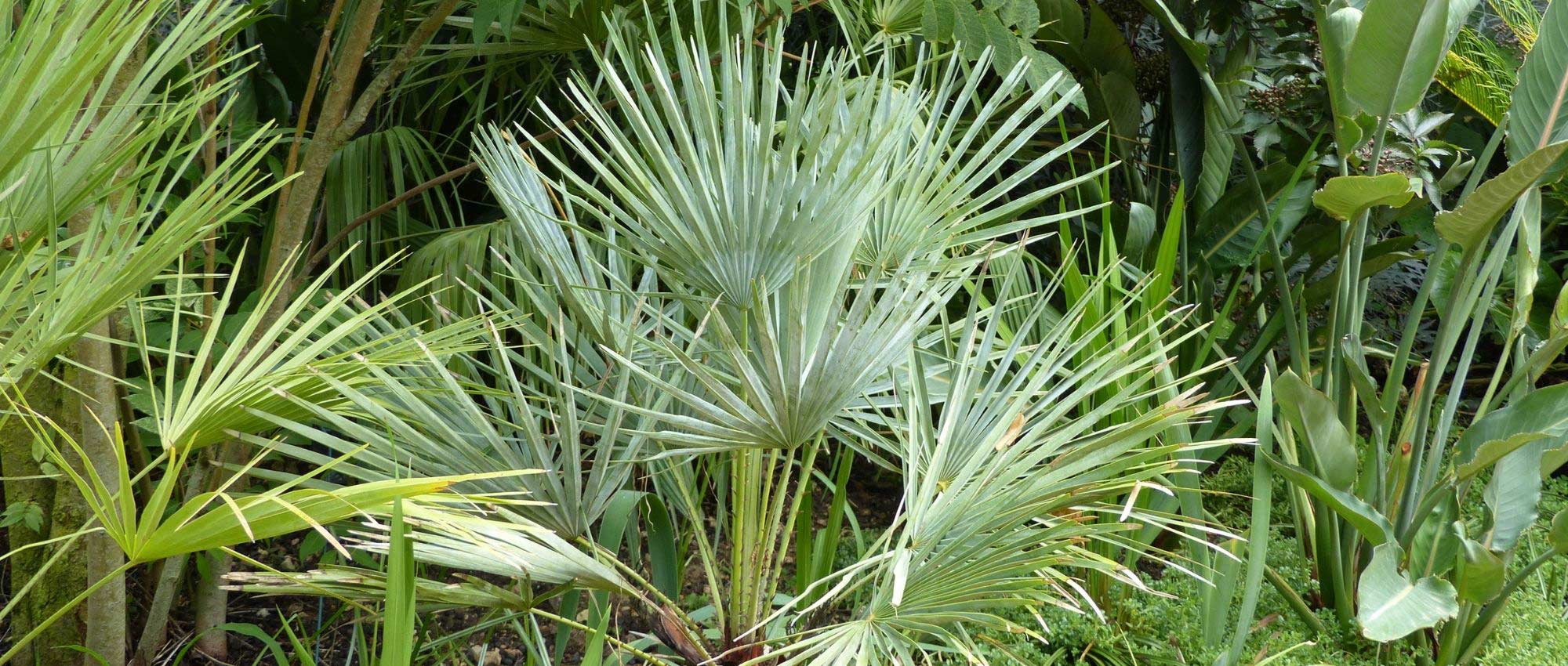
Chamaerops, dwarf palm: planting, growing and care
Contents
Chamaerops in a nutshell
- Chamaerops is a superb small palm with a bushy habit
- It is prized for its large palmate, fan-shaped leaves that can be green or silvery-blue
- Its compact size means it can be grown in a pot or container, and it adapts well to small gardens
- Undemanding and easy to grow, it is ideal for creating an exotic, out-of-the-ordinary garden
- It is one of the hardiest palms
A word from our expert
Chamaerops humilis is a handsome dwarf, bushy palm, with a compact habit. It usually forms several brown, fibrous stems, topped by superb palmate foliage, generally green, but sometimes silvery–bluish, as in Chamaerops humilis ‘Cerifera’. Chamaerops leaves have a beautiful fan shape, made up of numerous long, narrow segments radiating from the petiole. Leaflets are plicate, adding some texture. Chamaerops reaches up to 3.5 m in height, but some varieties are even smaller, such as Chamaerops humilis ‘Compacta’, which generally does not exceed 2 m.
Chamaerops thrives in full sun, in well-draining, even sandy soil. It has the advantage of being fairly hardy and can tolerate down to −12 °C. It can therefore be planted even in northern France! Its compact size and ease of cultivation make it suitable for growing in pots or containers. It is well suited to small gardens. It tolerates drought and requires little maintenance. It is best planted sheltered from strong winds. In a pot, it will need a little more care and will appreciate being repotted every two or three years. Chamaerops is perfect for integrating into an exotic-style garden with other lush foliage, into a Mediterranean garden with plants for dry soil, or into a modern, graphic garden.
Description and botany
Botanical data
- Latin name Chamaerops humilis
- Family Arecaceae
- Common name Dwarf palm, Doum palm
- Flowering between May and July
- Height up to 3.5 m
- Exposure full sun
- Soil type well-drained, rather sandy
- Hardiness -12 °C
Chamaerops humilis is a small clumping palm, valued for its fan-shaped foliage and silhouette that adds an exotic, transportive touch to gardens. Also called Dwarf palm or Doum palm, it is one of the most commonly grown palms in gardens. Unlike most other palms planted on the Côte d’Azur, it is native to Europe, occurring around the Mediterranean: southern France, Italy, Spain, Algeria, Morocco… It grows on fairly dry, sandy or rocky soils. It is sometimes found at altitude (occasionally above 1,000 metres), which explains its good hardiness, since it tolerates down to -12 °C.
Chamaerops belongs to family Arecaceae, which comprises palms. Although there are more than 2,500 palm species, Chamaerops humilis is the only species in genus Chamaerops. Previously, several other palms belonged to this genus, but have since been renamed Trachycarpus, as with Chamaerops excelsa, now Trachycarpus fortunei. In fact, Chamaerops humilis resembles it somewhat.
Unlike most palms, which have a single straight, upright trunk, Chamaerops is a small clumping palm, cespitose. It produces suckers and thus forms several trunks. It is a slow-growing palm. It does not grow very tall. Reaching up to 3.5 metres in height at most, it can be grown in a pot and fits easily into a small garden.

Chamaerops humilis: botanical illustration
Like other palms, Chamaerops is not a tree. Indeed, it is not ramified and does not form wood. What is considered a trunk is not really one, but rather a stipe, resulting from accumulation of old petiole bases (the base of the “stems” bearing leaves). Its stipe is fibrous, brown, and bears the bases of old petioles. At its crown a rosette of leaves unfolds.
Leaves of Chamaerops are palmate (unlike other palms, such as Phoenix or Butia, which have pinnate leaves). They consist of 12 to 15 narrow, elongated segments that radiate from the centre, giving a fan shape. These “leaflets” are fused at the base, all arising from the same point, then separate and end in points. They give the frond a sharp appearance. Leaflets are plicate, like a fan, which adds some texture.
Chamaerops bears large, impressive fronds that add a strong exotic flavour. They measure between 60 and 90 cm in diameter. As with other palms, they are thick, coriaceous and fairly stiff. Leaves are attached to the stipe by a thick petiole, which bears numerous thorns! Generally leaves are green above and whitish beneath. They can also be silvery-blue, as in Chamaerops humilis ‘Cerifera’. Foliage is evergreen and remains attractive in winter.
Chamaerops has numerous fine, long, fasciculate roots. They penetrate deep into soil to draw water and help the palm resist drought.

A Chamaerops humilis leaf (photo JMK) / thorns on petioles (photo Forest & Kim Starr) / a leaf of Chamaerops humilis ‘Cerifera’, blue-grey in colour
Chamaerops flowers in late spring, generally around June or July. It then bears inflorescences in the form of yellow panicles, 30 to 40 cm long, which appear near the stipe, in leaf axils. Flowers are tiny but borne in large numbers in fairly dense clusters. They are composed of three petals. Male flowers bear stamens, while female flowers have three carpels.
Chamaerops is generally dioecious: there are male plants, with only male flowers, and female plants (with only female flowers). There are also monoecious Chamaerops, which bear both male organs (stamens) and female organs (pistil) on the same plant.
After flowering, Chamaerops produces fruits, fleshy ovoid drupes up to 4–5 cm long, orange or red when ripe. They are numerous and gathered in clusters. They are unfortunately not edible.

Flowering of Chamaerops humilis (photo David J. Stang), followed by fruits (photo Angelofer)
Main varieties of Chamaerops

Chamaerops humilis - Dwarf Palm
- Flowering time July, August
- Height at maturity 3,50 m
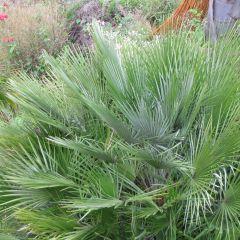
Chamaerops humilis Compacta - Dwarf Fan Palm
- Flowering time July, August
- Height at maturity 2,50 m
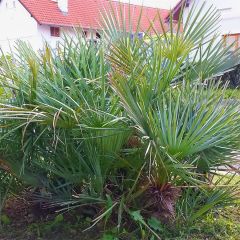
Chamaerops humilis var. cerifera - Dwarf Fan Palm
- Flowering time July, August
- Height at maturity 3 m
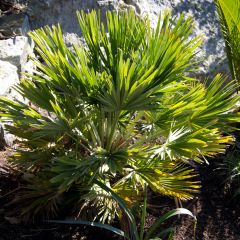
Chamaerops humilis Vulcano - Dwarf Fan Palm
- Flowering time July, August
- Height at maturity 2,50 m
Discover other Chamaerops
View all →Available in 3 sizes
Available in 3 sizes
Available in 4 sizes
Available in 1 sizes
Available in 2 sizes
Planting Chamaerops
Where to plant?
Like most palms, Chamaerops needs warmth and light! Plant it in a sunny spot. Shelter it from strong winds.
Grow Chamaerops in a well-draining substrate. It dislikes stagnant moisture, especially in winter, and does well in sandy, free-draining soils, although it does appreciate cool soil. If substrate drains well, Chamaerops will be more cold-hardy. If ground tends to retain water, improve drainage by adding coarse sand or gravel, or plant on a mound. Chamaerops tolerates poor soils, though it becomes more attractive and larger, more luxuriant, in fertile soil.
Chamaerops tolerate sea spray very well, so they can be planted in a coastal garden.
As this is a fairly easy, compact palm, it can be grown in a large container, for example on a patio. We recommend the variety Chamaerops humilis ‘Compacta’.
Choose location for your Chamaerops carefully: once planted, it does not like being moved.
When to plant?
We recommend planting your Chamaerops in spring, around May, as this is the best time for it to establish in the garden. It will benefit from mild, warm temperatures before facing winter. It will have time to establish and develop its root system to better withstand the cold of the following winter.
How to plant?
For planting in open ground:
- Choose a sunny spot with enough space, then dig a large planting hole, two to three times size of the rootball.
- Place a well-draining substrate (for example a mix of soil and coarse sand). If ground tends to retain water, it is important to improve drainage by adding coarse sand or gravel, or by planting on a mound so water can run away quickly.
- Remove palm from its pot then plant it.
- Refill substrate all around. Avoid burying base of stipe.
- Water generously.
- You can make a watering basin, or apply mulch around the palm so soil remains cool.
For planting in a pot:
- Choose a large, deep container
- Install a drainage layer at bottom (clay balls, broken pottery shards…).
- Place a well-draining substrate in container.
- Plant your palm.
- Refill soil around it, avoiding burying its collar.
- Water generously.
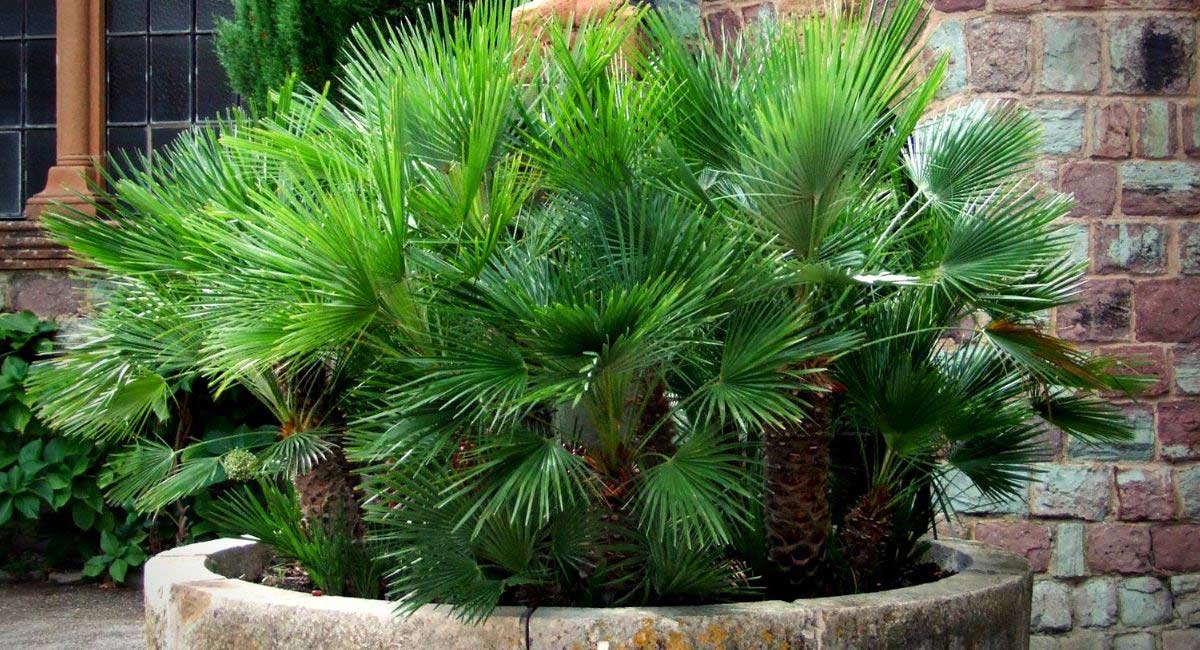
Chamaerops humilis (photo Christophe Finot)
Caring for the dwarf palm
Chamaerops needs regular watering during its first year, and thereafter during periods of prolonged drought. Note that, over time, this palm becomes more drought-tolerant.
Chamaerops humilis tolerates cold fairly well. However, if you live in a region with a cool climate, for example in the mountains, we recommend protecting it for winter. Bring it under cover if grown in a pot, placing it in a sunny spot; if planted in the ground, fit a winter fleece.
In spring and summer, you can cut off old fronds that have dried.
Although Chamaerops can grow in fairly poor soil, it’s best to add compost in autumn to enrich the soil and feed your palm.
If grown in a pot, you can give it some liquid feed in spring and summer. Also remember to repot from time to time. Do this in spring, on average every two years, each time choosing a pot slightly larger than the previous one. This renews the potting compost and gives it a little more room to grow. If you don’t repot, at least top-dress, renewing the top layer of compost.
When tending your Chamaerops, take care not to injure yourself on thorns present on the petiole.
Diseases and pests of Chamaerops
Two main pests cause problems for palms. Palm moth (Paysandisia archon), native to South America, has caterpillars that bore into the palm trunk and feed on it. This damages the leaves, which become perforated, sometimes deformed, and tend to yellow and dry out. To control this pest, a treatment using nematodes is usually employed.
→ read about it here: “The palm moth, Paysandisia archon: control and treatment”
Red palm weevil, Rhynchophorus ferrugineus, also threatens palms. This parasitic pest originates from Southeast Asia (Indonesia, India…). The larvae feed on the trunk and leaves, creating tunnels. Attacked palms may lose their leaves and die. These parasitic pests pose a real danger to palms, and if you notice their presence it is important to intervene to eliminate them. Control of the red palm weevil is even obligatory, and its presence must be reported to the town hall. Finally, when Chamaerops is grown under cover, it can be attacked by red spider mites. In that case, you can mist the foliage, as they dislike humidity.
Propagation: sow Chamaerops seeds
Chamaerops is propagated by sowing, but bear in mind this operation takes time. Sow seeds preferably in spring, or possibly in summer.
- Start by placing seeds in a glass filled with warm water for at least 24 hours.
- Prepare a pot with a mix of potting compost and sand.
- Sow seeds.
- Cover with a layer of substrate.
- Water gently.
- Place pots in a bright location at a temperature between 22 and 25 °C.
- Ensure substrate remains slightly moist.
Then, be patient! Seeds can take up to three or four months to germinate. After that, you can pot on young plants into individual pots.
It is also possible to multiply Chamaerops by separating suckers when they are still young. Ideally find a young sucker about 20 cm long, remove it in spring and pot it up.
Uses and companion plants
Enjoy Chamaerops to recreate an exotic, lush atmosphere! It will pair nicely with the flowering of Crocosmias, Eucomis or Cannas… Also discover the original flowering of Hedychium, forming flower spikes in warm colours, usually yellow or orange. For a truly exotic, out-of-the-ordinary garden, it is ideal to place these plants near a pond. Choose some plants with luxuriant foliage to accompany these flowerings, such as Gunnera, banana plants or arborescent ferns. You can also plant Cordylines, Phormiums and Carex… Not forgetting the Yucca, a shrubby succulent plant whose elegant silhouette is reminiscent of palms.
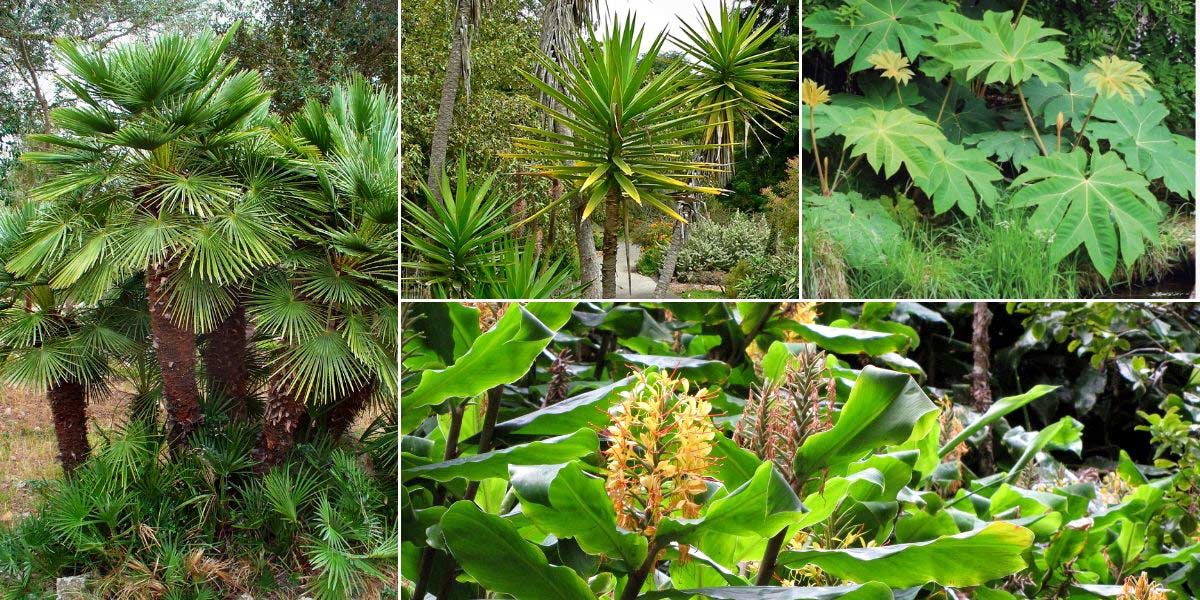
Chamaerops humilis (photo H. Zell), Yucca aloifolia (photo Stan Shebs), Tetrapanax papyrifera ‘Rex’, and Hedychium gardnerianum (photo Forest and Kim Starr)
Chamaerops will also allow you to compose a beautiful Mediterranean scene. For this, the ideal is to plant it with lavender, Jerusalem sage (Phlomis fruticosa), Santolina, and Euphorbias. We also recommend favouring succulent plants with fleshy tissues, such as Sedums and Opuntias. Moreover, most of these plants are easy to grow, need little maintenance and do not require watering. Likewise, feel free to position your Chamaerops at the back of a rockery or rock garden. Create a raised mound in full sun, place large stones and a well-draining substrate. Plant Eryngium, Echiums, and red valerian (Centranthus ruber). To add verticality and graphic interest, include Verbascums, or mulleins, which generally offer attractive grey, downy foliage and very upright yellow flower spikes.

Opuntia microdasys (photo Stan Shebs), Centranthus ruber (photo CaptainMish), Chamaerops humilis, Phlomis fruticosa, and Agave americana (photo Moreau Henri)
Finally, with its majestic architecture and fan-shaped fronds, Chamaerops can easily be integrated into a modern, graphic garden. In this case, we recommend the variety Chamaerops humilis ‘Cerifera’, which bears silvery-blue foliage. You can place it near other plants in seemingly timeless shades (purple, white, black, silver, blue-toned, burgundy…). Choose, for example, Stachys lanata, Allium ‘Mount Everest’, Pennisetum setaceum ‘Rubrum’, Echinops, Echinacea ‘Purity’, or Agapanthus africanus ‘Albus’… You will be sure to achieve a chic, elegant garden!
Useful resources
- Discover our range of Chamaerops: our range of Chamaerops
- All our growing advice: “Palms: Plant, to grow and to maintain”
- Discover our full range of palms.
- Book La connaissance des palmiers, by Pierre-Olivier Albano, published in 2002 by Edisud
- Website of association Les Fous de Palmiers
- Our advice sheet: Palms by climate
- Discover our tutorial: How to dry a palm leaf ?
- To prevent and treat: Diseases and parasitic pests of palms
Frequently asked questions
-
Why are the leaves on my palm tree perforated?
It is probably attacked by palm moth, Paysandisia archon. The larvae of this moth bore tunnels in the stipe and damage the emerging leaves, some of which will be holed when they unfurl. Other signs can also help diagnose an attack by this pest: presence of boreholes, sawdust at top of trunk, viscous gum at entrances to tunnels, etc. To control this moth, a nematode-based solution is generally used. Another technique is to apply glue to attacked areas.
-
Leaves are drying out! Why?
If a palm lacks water and suffers from drought, leaf tips tend to dry out. However, foliage drying can also be caused by attack by pests such as palm moth or red palm weevil. Finally, sometimes this is a natural, normal process: palms renew their leaves over time, and older fronds will eventually dry out. You can cut them off once completely dry.
-
Crown of leaves is thinning and drooping. What's happening?
Your palm is likely to be attacked by the red palm weevil (Rhynchophorus ferrugineus) or the palm moth (Paysandisia archon). Their larvae bore into the stipe and consume it from the inside, causing fronds and the centre of the palm to dry out. They cause significant damage to palms and, if nothing is done, can lead to their death. To control these pests you can use a nematode-based treatment: microscopic worms that are parasitic on these insects.
-
Leaves are yellowing. Why?
This may be caused by excess moisture if ground is not draining well and you water regularly. Likewise, if you grow Chamaerops in a pot, make sure substrate allows good drainage of water (by placing clay balls, pot shards or gravel in the bottom of the pot, and using as substrate a mix of potting soil and coarse sand, for example). Also check soil is dry before watering again. It is important substrate can dry out between waterings.
Leaves can also turn yellow because of sunburn, especially if your palm is young and you placed it directly in full sun. Opt for partial shade at first and acclimatise it gradually before exposing it to full sun.
- Subscribe!
- Contents
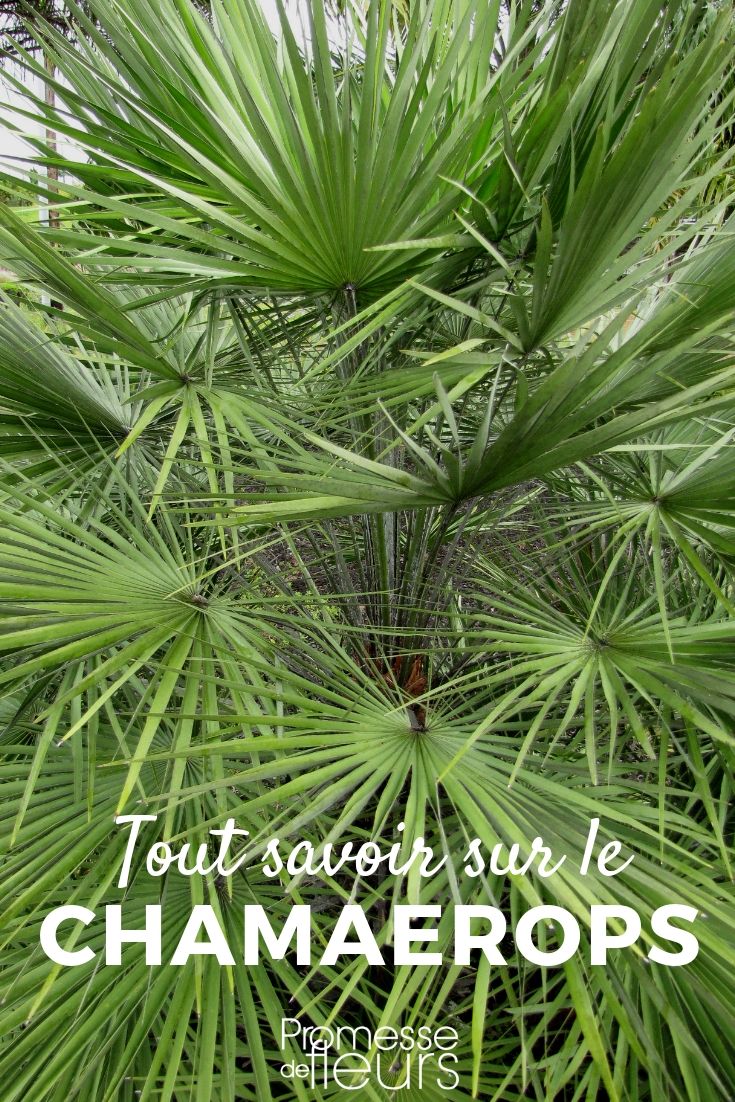

































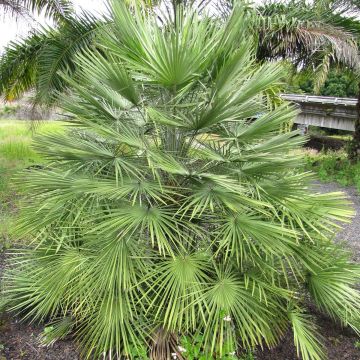
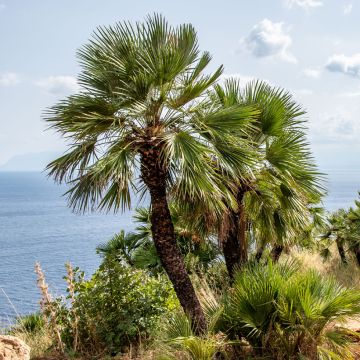

Comments